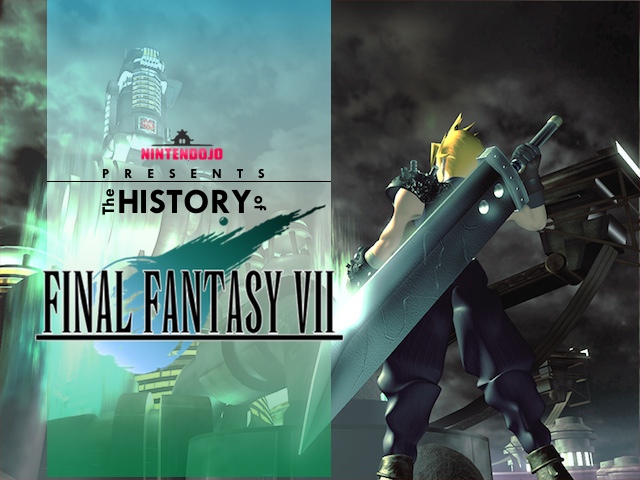
Cloud is coming to Super Smash Bros. Up until the November 12 Nintendo Direct broadcast that revealed this bit of information, that particular sentence would have been seen as little more than a pipe dream. Now, it’s the megaton bombshell news story of the moment, but for some Nintendo fans, the hype might be flying over their heads. After all, Final Fantasy VII and Cloud represent a tumultuous period of time in Nintendo’s history, when the then-industry leader and developer Squaresoft parted ways in a notoriously messy split. Nintendo systems had been the home for all Final Fantasy games up to Final Fantasy VI in 1994, but when the franchise made the jump to Sony, many a Nintendo supporter lost track of the series. So for everyone who missed out on the RPG legend, here’s the history of FF VII, which is one of the most important and influential video games ever made!
Warning! Some spoilers ahead for those who haven’t played the game!
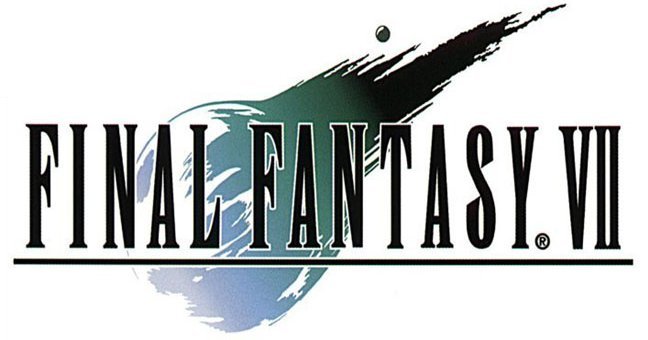
The very early stages of FF VII development began in 1994 for Super Nintendo before the entire project was sent to the back burner by Chrono Trigger. Squaresoft needed as many hands as possible on deck for Chrono Trigger (which itself would go on to become a historically significant title), with the resultant momentum shift causing FF VII to be pushed further out. The delay resulted in the destination system for FF VII to be changed from SNES to Nintendo’s next console, the Ultra 64 (later known as Nintendo 64).
Final Fantasy series mastermind Hironobu Sakaguchi had been less involved with the development of Final Fantasy VI, but that would change with VII. Sakaguchi knew the future of gaming was 3D, which Nintendo’s new console was intended to make pioneering strides with, and that for Final Fantasy to remain relevant, it would need to embrace this looming transition under his guidance. For FF VII, Sakaguchi felt it was necessary for himself to take a more hands-on role in the game’s creation.
Most people, including the developers at Square, were anticipating FF VII to be released on Nintendo’s upcoming Ultra 64. The entire series had been Nintendo-exclusive from its inception, and with Ultra 64’s robust tech capabilities, FF VII seemed destined to continue that tradition. It would have happened, too, if not for one major problem: Ultra 64 wasn’t going to be CD-ROM based. Sakaguchi and his superiors had been banking on Nintendo adopting the burgeoning format, as FF VII was going to be a data-intensive game that would need all the additional storage space CDs afforded. Cartridges couldn’t contain as much data and were too expensive to produce, making them absolutely prohibitive to Square for this game. Nintendo was standing firm with its decision, though, and with no other choice, Square broke ties with the company.
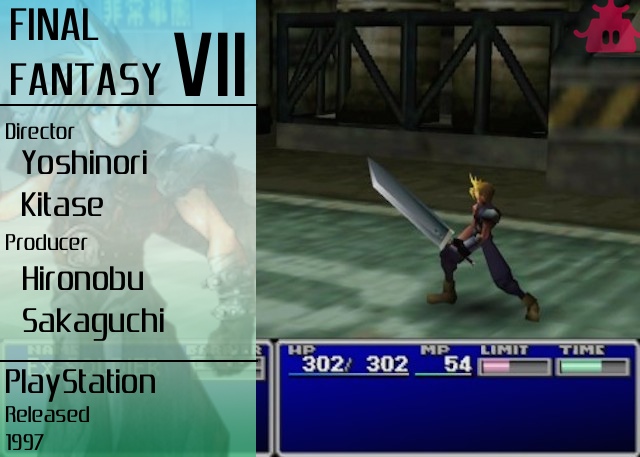
While the split alone was a blow to Nintendo, it was worsened by Square’s choice of successor, which was Sony and its new PlayStation. Sony and Nintendo had gone through an infamous falling out over a botched initiative to produce new gaming hardware, and the consequences of that failed deal had pushed the former to go independent and establish the PlayStation brand as direct competition for the latter. Sony’s CD-enabled 32-bit system was already making life difficult, but for Square to willingly add a bonafide Final Fantasy installment to the console’s roster was going too far, in Nintendo’s opinion.
Nintendo’s response was less than cheery. Then-company president Hiroshi Yamauchi declared that a Final Fantasy game would never again appear on a Nintendo console and promptly sold off his shares of Square’s stock. Square followed suit, and the two companies would remain in a cold war for years to come. Nintendo fans were crushed, bearing witness to a breakup that they never thought they’d see. Indeed, it was truly the end of an era, and the series has since been largely absent on Nintendo consoles outside of spin-offs and remakes. It was a sad ending, but one that would ultimately benefit the development of FF VII.
The first glimpse of what would become FF VII was seen at the 1996 SiGGRAPH computer graphics convention in Los Angeles. This SG1 demo, as it’s often called, featured characters from FF VI rendered with 3D polygons and fighting a golem. The demo was a showcase for what Sakaguchi was hoping to achieve with VII, not an actual example of the game, but it filled people with excitement, regardless. Cinematically and technologically potent, SG1 was the seed from which everything would grow.
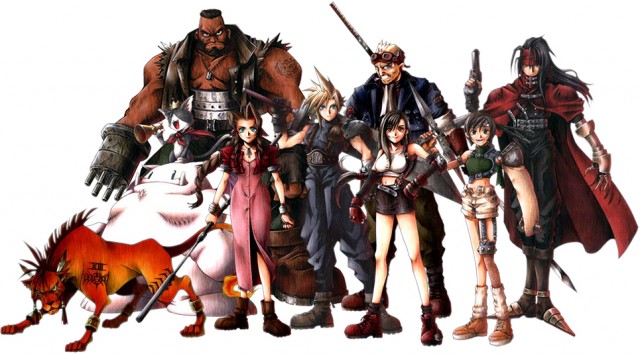
Free of storage constraints, Sakaguchi was able to move forward with his project unhindered. Game director Yoshinori Kitase and co-writer Kazushige Nojima would prove indispensable during development, helping to focus and perfect Sakaguchi’s vision. First and foremost, it was essential to solidify the battle system. While FF VII would be a turn-based RPG like previous series installment, Sakaguchi and company wanted to do something different to make the title stand out. Active Time Battles would return, but Limit Breaks were introduced, which were command abilities that become enabled as characters took damage during battles. Perhaps the biggest and most memorable addition to the battle system, however, was the introduction of Materia. Glowing orbs of power, Materia served as the game’s skill and ability system; players could choose which Materia to equip to a given character and create a varied number of combinations for each.
With the basics of battles cemented, actual rendering and creation of the world of FF VII became the biggest challenge. In terms of story, the game had began life starring a band of young resisters on the run from one “Detective Joe”; thankfully, Kitase stepped in and shifted the story’s focus instead on two dueling organizations called AVALANCHE (a group of rebels) and Shinra (an oppressive, shady mega-corporation), a mysterious conspiracy, and a memory-challenged ex-soldier named Cloud. As development progressed, the narrative of FF VII would take a fairly dramatic departure from the series’ norm. Sakaguchi wanted to touch on a variety of high concepts that hadn’t ever been fully explored in a video game, such as the symbiotic relationship between man and nature, death and loss, and more. Kitase and company were integral to finding a way to express these ideas in a way that was clear and interactive within a video game. Beyond Sakaguchi’s own philosophical musings, there were practical matters to attend to, as well.
Besides its story and gameplay, FF VII‘s graphics needed to make a bold statement to the world. Sakaguchi wanted FF VII to be a visual spectacle, a pristine example of what a 3D, modern RPG could be, but it was easier said than done. Most of Square’s staff had little to no experience working with new animation software like PowerAnimator and Softimage, which necessitated an injection of new blood. The influx of additional workers sent the number of staffers on FF VII skyrocketing, along with its budget, which easily exceeded its $40 million dollar allotment (along with Sony’s own $80 million dollar marketing push, VII became the most expensive game ever made, at the time). Though rookies with the software, Square’s staffers quickly took to it and began producing at a very high level.
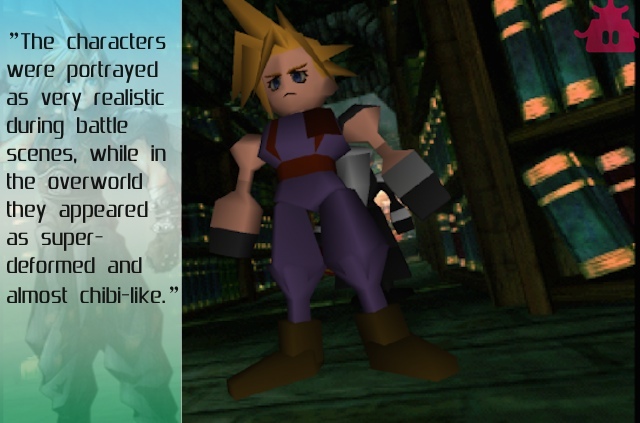
The result of Square’s hard work was one of the most visually stunning games of that generation. Lush pre-rendered backgrounds conveyed the grandeur of sprawling Midgar, which had a riveting steampunk aesthetic that was more modern and unlike what Final Fantasy games before it had ever depicted. The characters were portrayed as very realistic during battle scenes, while in the overworld they appeared as super-deformed and almost chibi-like. The odd juxtaposition was surprisingly effective and suited FF VII well. Many people were drawn to FF VII purely by a desire to witness the game’s graphics, accomplishing a huge part of what Sakaguchi hoped for when he decided to take the series to 3D.
Sakaguchi hit a bit of a snag when it came time to enlist the aid of longtime Final Fantasy character designer Yoshitaka Amano. Amano was busy establishing art exhibitions and workshops in Paris and New York, which massively inhibited his ability to contribute to the project. While Amano would go on to design FF VII‘s signature meteor logo and assist with character sketches, the lion’s share of design work would be done by Tetsuya Nomura. The artist had previously only handled minor character and monster designs for FF VI, but was still more than prepared to hit the ground running.
Nomura’s character designs for FF VII were a big shift from anything the series had yet seen. The core cast consisted of Cloud Strife, Aerith Gainsborough (originally Aeris due to an error in the game’s initial translation), Barret Wallace, Tifa Lockhart, Red XIII, Cait Sith, Cid Highwind, Yuffie Kisaragi, Vincent Valentine, Zach Faire, and the villainous Sephiroth. The cast was varied and incredibly unique for the time; no other RPG cast to that point quite looked like the one in FF VII, and to this day Nomura’s designs continue to influence RPG creators around the world. Arguably, even Nomura himself would spend years trying to chase the ghosts of what are considered by many his greatest creations.

Cloud was an immediate hit with his giant sword and spiky hair, but he didn’t quite start out that way. Initially, Cloud had black slicked-back hair to contrast Sephiroth’s silver locks, but the designer thought he didn’t look heroic enough and added in the blond spikes fans know and love. (Interestingly, Cloud’s rejected design sounds an awful lot like what Zach Faire would go on to look like!). Barret once sported two hands and a bow-shaped gun, while Vincent went through an entire series of careers before settling on undead gunslinger. Nomura became so invaluable to the development of FF VII, that he was eventually given story input.
One particularly big challenge the team tussled with was straying from the standard RPG bad guy. A typical omnipotent warlord or wizard wouldn’t do as the villain for FF VII; Sakaguchi had grown tired of that worn trope and wanted something different. The result was the evil power company Shinra, the evolution of a traditional super threat for a modern setting. Primary antagonist Sephiroth provided a different dilemma for the design team, as he was already unique from a visual and background perspective, but was tough to tackle from a narrative standpoint. Rather than bombard the player with his presence, Sephiroth was instead shown sparingly throughout the course of FF VII in order to build him up in the player’s mind (Kitase compared this technique to what Spielberg did with the shark in his film Jaws). The theme song of Sephiroth, One-Winged Angel, became the centerpiece of composer Nobuo Uematsu’s stirring score.
As the cast of VII grew, the team wanted to provide the player with a wide variety of characters to choose from, so they felt that there needed to be even more deviations from RPG traditions. One element that Sakaguchi was especially weary of was the hero sacrificing his life for his lady love, only to see her resurrected later. After all, death without permanence held no meaning, and FF VII was a game of purpose. On a Sunday night during a collaborative phone call, Nomura suggested something that would hit Final Fantasy fans like a ton of bricks; kill heroine Aerith and establish Tifa as the true female lead. Sakaguchi loved the idea, and one of the most shocking moments in video game history was decided upon.
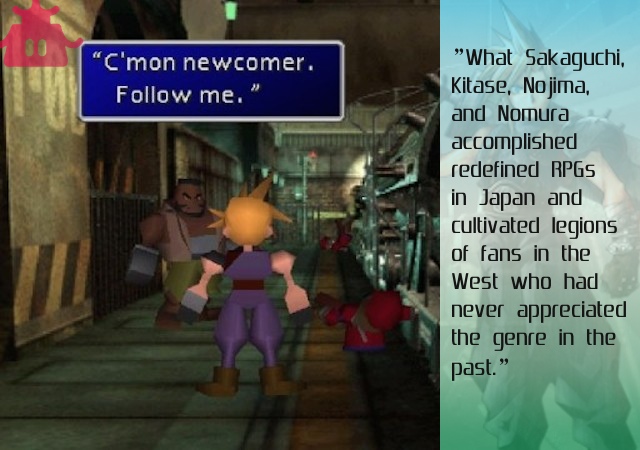
The death of Aerith is unquestionably one of the most powerful in video game history. The main reason for its impact is largely owed to how unexpected and unusual it was within the confines of a video game. At that point in the history of gaming, characters (especially a woman) didn’t die the way that Aerith did. Fans watched in horror as Sephiroth burst out of nowhere and impaled her, and players were left besides themselves, overcome with a litany of emotions. It was simply inconceivable, as nothing in the game suggested Aerith would ever not be a part of the team; from spending countless hours leveling her up, to her involvement in certain story beats, Aerith was an integral element of the adventure. Many fans were convinced that they’d done something wrong up to that point in the game and shut their PlayStations off to try and pinpoint where they made the “mistake” that caused her to die. Some people went so far as to erase hours of gameplay and started their files over, too, but the result was the same for everyone: Aerith was dead and never coming back.
In a world where internet access was largely restricted to a small chunk of the population, fans predominantly experienced this moment of the story in solitude, without the pandemonium that would have swept something like Twitter or Facebook in today’s social network-infused society. Yet, despite talk of this moment in the game being comparatively limited by contemporary standards, the powerful reactions by fans were so common and widespread that it’s a testament to the advances in storytelling that FF VII achieved. Players became wholly invested in the plight of Cloud and his companions during the game’s lengthy quest, picking and latching on to characters as one would those in a novel or film. The cinematic flourishes of FF VII would go on to become industry standards, and the intricate narrative inspired an entire generation of players and game designers.
FF VII isn’t without its detractors, of course, as there are many who like to deride the game’s suspect Western translation, its battle system, and the hefty number of copies returned to retailers, but there’s no denying the millions of units sold and huge legacy left in FF VII‘s wake. The game was an enormous hit that secured Squaresoft’s future as a developer, as well as evolved the creation process and perception of video games as a medium of storytelling moving forward. What Sakaguchi, Kitase, Nojima, and Nomura accomplished redefined RPGs in Japan and cultivated legions of fans in the West who had never appreciated the genre in the past. While many of FF VII‘s themes and design choices have become overly replicated in the years since, it remains a highpoint of the industry and a true classic. Cloud is as important a figure in the history of video games as Mario or Mega Man, and I hope Nintendo fans will be thrilled to see him squaring off with so many other legendary characters when he finally joins the Smash Bros. roster.
Special thanks to Retro Gamer for some of the material covered in this article.
Please enjoy these other gaming history features:




 ShareThis
ShareThis







The impact this game should have made on me was lessoned by someone “spoiling” the death scene mentioned above. I played it on PS1 not long after it came out and still have my copy.
However, count my college roommates among the “hefty numbers of copies returned to retailers” mentioned in the last paragraph. They were not unlike a lot gamers at the time seduced (suckered?) by Square’s commercials which only showed the CGI cutscenes.
My roommates almost exclusively only played sports games and purchasing FFVII was an exciting step outside their comfort zones. They were so disappointed! While my college-age self jokingly called them dumbasses for not realizing the “actual game” didn’t look like what they had seen in the commercials, I’m sure many thousands of consumers had similar experiences. Still, many others were turned on to a genre they didn’t even realize existed.
FFVII isn’t even my favorite FF game on PS1, but I respect its historical significance. I still seethe at having “the scene” spoiled. Oh well, I’m still proud of having realized Samus is a girl by beating the original NES game before talk on the playground talked of the big “secret.”
“In a world where internet access was largely restricted to a small chunk of the population, fans predominantly experienced this moment of the story in solitude, without the pandemonium that would have swept something like Twitter or Facebook in today’s social network-infused society.”
Actually, I think the internet was a lot more widespread by 1997 than you might think. Even though social media in its present form didn’t exist yet, so-called “internet portals” like CompuServe and especially America Online (which had their own primitive versions of social media in the form of chat rooms and message boards) were huge. So, as long as you had an AOL account (and almost everybody did by that time), you could easily just go on one of their many video game themed message boards and have Aerith’s death spoiled for you.
I realize I’m nitpicking, and I enjoyed reading this article otherwise, but that small historical correction needed to be made.
I actually disagree. In 1997, the average American household didn’t have internet access; 22.2% of Americans (34.5 million people) actively used the net at that point. The number of Americans using computers at home was in the 70% range, but the number who were online was comparatively small. Factor in the lack of social media you mentioned (also, no smart phones), and I stand by my point that the vast majority of people who talked about that scene in FF VII were doing so face to face or over the phone.